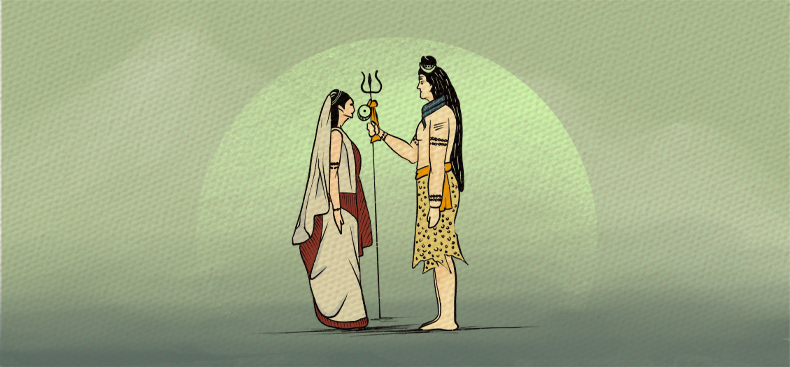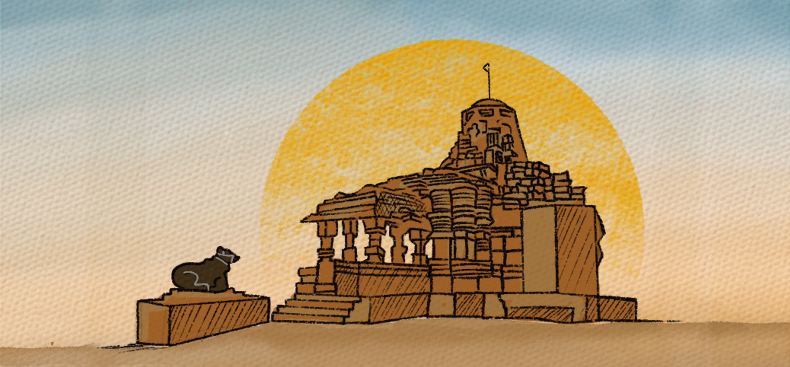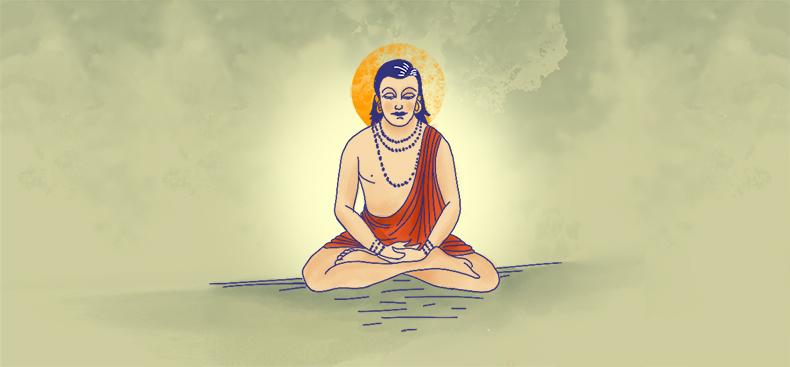Shiva and Devi Saṃvāda
If the whole world is born out of ignorance (ajñāna), the Devi suggests, then with the attainment of jñāna the worldly delusion of saṃsāra will end and the seeker will attain liberation. But, in this scheme of things, the Devi asks what is the role of yoga? Śiva agrees that ignorance is the cause of bondage and it is through knowledge alone that the delusion of saṃsāra will end. However, Śiva cautions that one must first know the nature of knowledge and the means of achieving it before talking of mokṣa (liberation).
Śiva says that there are two types of jñāna—divided (sakalaṃ) and undivided (niṣkalaṃ). The person with divided jñāna is a man of worldly attachment, involved in joys and sorrows, full of “I” consciousness, desire, and anger. Even though the person knows the śāstras and has an insight into the nature of the self, his knowledge is as good as that of an ignorant person. A person with jñāna gained through other methods continues to be influenced by past impressions without a means to escape the cycle of birth and death.
Śiva says that it is a delusion that one can achieve liberation just with the help of chanting (japa), renunciation (vairagya) or contemplation. Someone not practising yoga is susceptible to diseases, desires, hunger, and other impediments. His mind-stuff (citta) gets easily distracted during meditation. Even if an ant crawls up in a meditator’s body, his concentration is lost—there can be no success in meditation for such a person. An unfit body leads to obstacles in the natural flow of prāṇa and apāna and, with an uncontrolled breath, there is no equanimity in meditation. In this disturbed state of meditation, whatever thought that the person has during the time of his death, he is born accordingly in his next birth.
However, the knowledge of undivided self is devoid of imperfections of ego and worldly attachments. Śiva says that the way to reach the state of undivided knowledge of self is by burning the body and the inner organs in the fire of yoga. Jñāna becomes mature with the help of yoga. By yoga, a person becomes devoid of all passions and attains a self-luminous body. The practice of yoga burns the impurities and the gross elements of the body and, in the process, the yogi attains an infinite number of siddhis (spiritual powers). Unlike the jñāni, the yogi is in complete control of his body, mind, and senses. He is not subjected to the joys and sorrows of an ordinary person. Yoga, therefore, leads to a perfect body and an inner purification that rids the mind and intellect of all attachments, passions, and desires.
A person whose body and mind are sculpted in the fire of yoga is a jivanmukta. Śiva explicitly rejects any talk of videhamukti—that is, mokṣa after death—but affirms liberation while living, jīvanmukti. Śiva says that even dogs, cocks and insects leave their body after death, but that does not mean they have attained liberation.
Despite this extended discourse, the Devi still has lingering doubts. If yoga is the only way to achieve liberation, she asks, then what about the śāstras that proclaim that mokṣa can only be attained through jñāna? Śiva replies that such sayings are like the proverb “Victory is won in the battle with the help of the sword”. While a sword is required in war, it is through bravery that one achieves victory. A sword is only an instrument in achieving victory, while bravery is the action to achieve that victory. Similarly, jñāna is an instrument that will lead to mokṣa, but for jñāna to be effective, it requires the effort of yoga, just as one needs bravery in using the sword to achieve victory in war.
Śiva says that it will take many lifetimes to attain jñāna (if at all), but through yoga just one lifetime can be enough to attain it. He says that neither contemplating “I am liberated” helps achieve liberation, nor studying scriptures helps control the mind. It is only through yoga that one can control the prāṇa of the body, and this controlled prāṇa helps control the mind, a prerequisite for attaining jñāna and subsequently mokṣa.
Details of Yogic Practises
Śiva then details these yogic practices: prāṇayama, bandhas and śaktichālana. These are the principal techniques of the Nātha order of ascetics and foundational techniques of Haṭha yoga. The text describes four types of prāṇayamas—sūryā, ujjāyī, bhastrī, and śītalī—which are collectively called the sahita kumbhakas. For advanced practitioners, this sahita kumbhaka is to be performed with the three bandhas—mulābandha, jālandharabandha, and uḍḍiyāṇabandha—to gain control over the moving prāṇa and to make it enter the middle channel of the body. This prāṇa in the middle channel, also referred to as the Kuṇḍalinī, ascends upwards breaking the three knots—Brahma, Viṣṇu and Rudra. In the final stage of the ascent of prāṇa, the highest state of consciousness is reached—a state in which all duality melts away, the mind and ego have entirely dissolved, and the jīva (self) becomes one with paramātman or Śiva.
Conclusion
We notice that this highest stage of yoga is the same as the Vedantic concept of liberation. The metaphysics of yoga is purely Vedantic—the union of ātman and paramātman—but the methods of reaching the goal are different in Vedanta and yoga. While the Vedantic concept relies on contemplation and detachment in achieving this state of union, the haṭha yogis rely on the control of prāṇa and guiding this prāṇa into the central channel to achieve the same state. The yogis also describe this state as the union of Śiva and Śakti, prāṇa and apāna, sun and moon, or rajas and retas.
(Editors Note: This essay is part of our effort to bring early Haṭha yoga texts to wider audiences. As part of our “yoga text series”, we have already published essays on Amṛtasiddhi and Dattātreyayogaśāstra)




Leave a Reply